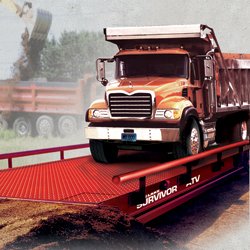For the next few entries we are going to answer some frequently asked questions about buying a truck scale. In the first entry we answer the question below.
What exactly is the difference amongst a full-length truck scale and an axle scale? Which variety do you notice recyclers employing most frequently?
An axle scale is designed to weigh only a single individual axle of a large vehicle at one time and may possibly give an overall total gross weight at the conclusion of weighing the truck. Axle scales are frequently portable, but could also be permanent installations as well. For example, check out the video below.
On the other hand, full-length truck scales, usually 70 feet long can weigh the entire truck (all axles included) in a single weighment, so axle scales need more time to weigh up a truck than full-length weighing machines. Recyclers will normally use full-length 18 wheeler scales due to the fact axle scales will not be NTEP legal for trade, which is needed in the recycling industry.
Recycling businesses are having to pay men and women depending on the load of the timber in their particular vehicle load, so consequently it’s important for the scale to be NTEP listed for correct weighments. In brief, the process involves individuals bringing in their recycled copper, the metal recycling company compensates these individuals for it depending on the weight displayed on their truck scale, and so the recycler then usually utilizes a railcar to deliver the material to steel mills. For more information on Cardinal Truck Scales, contact authorized distributor Central Carolina Scale, located in Sanford NC.


